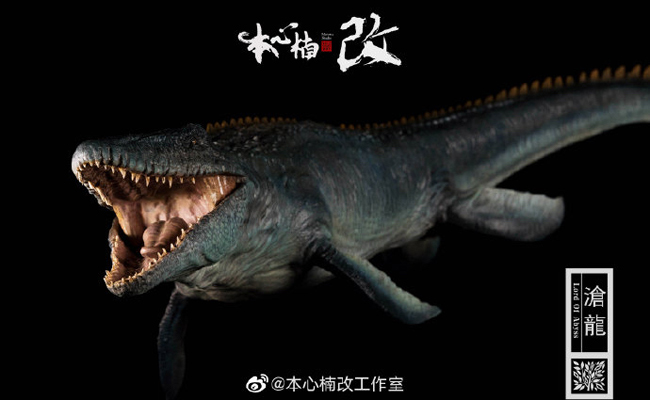Everything Dinosaur team members wrote a blog post a few days ago about how palaeontology is depicted in video games. The University of Birmingham led research, published recently in the journal EGUsphere Geoscience Communications, examined how the science of palaeontology is portrayed to the public, at a time when many people get a lot of their knowledge from media and entertainment.
To read Everything Dinosaur’s blog post about this research: Palaeontology in Video Games.

Classifying How Video Games Depict Palaeontology
In order to understand how palaeontology and other related Earth sciences are portrayed, the research team looked at palaeontological content and classified it into a number of categories.
Here is the list of categories the team used:
- Ancient animals as adversaries – using ancient animals – typically dinosaurs and pterosaurs – as adversaries that must be killed. Examples include The Legend of Zelda, Tomb Raider and Peter Jackson’s King Kong video game.
- Ancient animals as tools – for example Yoshi, an omnivorous theropod dinosaur who first appeared in Super Mario World as a mount for the Mario brothers in their adventures to rescue Princess Peach.
- Fossils as collectables – items found throughout the game setting to help the player progress through the game. For example, Red Dead Redemption 2 features a side quest to locate 30 fossil specimens in order to assist an aspiring palaeontologist.
- Ancient animal management simulators, otherwise referred to as “park sims” – games such as the Jurassic World Evolution aim to construct a financially viable park or zoo.
- Ancient animal simulators – players control an individual animal through an entire life cycle in a natural, open world, environment such as Saurian or Ancestors: The Humankind Odyssey.
Helping or Hindering the Perception of Palaeontology
Once the researchers had classified the video game content, they set about devising a rating system to determine whether the depiction hindered or helped the science of palaeontology and how it was depicted in cyberspace compared to the real world.
The factors analysed to determine the impact were:
- Ancient death machines – ancient animals as vicious, frightening and brutish enemies for players to combat. AKA ‘monsterification’, the animal’s proportions and features like claws and horns are exaggerated – for example in Ark: Survival Evolved.
- Fossil = dinosaur = Tyrannosaurus: lack of palaeodiversity – Dinosaurs have become almost synonymous with ancient life in the entertainment industry. Ancient animal diversity is often limited to a handful of “iconic” species recycled by the entertainment industry.
- Palaeotrivia – In order to help players understand complex topics or introduce story elements, many games feature in-built encyclopaedias about characters, objects and locations in the game setting – particularly in park management games such as Jurassic World: Evolution series.
- Depiction of palaeontological science – most palaeo-video games integrate science into gameplay that increases the knowledge of the player, but they can take creative liberties in order to make engaging gameplay mechanics. In essence, these games may depart from the science narrative all too readily.
- Representation of ethics in palaeontological video games – Palaeontology has a long colonial history with deep-rooted exploitative practises which appear within games unchallenged, for example the illegal buying and selling of fossils in Jurassic World: Evolution.
- Male, pale and stale – palaeontologists in video games are typically depicted as old, white men or the ‘Indiana Jones stereotype’ – for example Stardew Valley and Dinosaur Fossil Hunter.
- Perpetuation of harmful, misogynistic, and racist tropes – while female lead characters are becoming more commonplace, games still sexualise women more than their male counterparts, particularly in depictions of early humans.
The Most Common Palaeontological Tropes
By highlighting the most common palaeontological tropes, both negative and positive, identified in video games, the researchers hope to assist science communicators when working in the virtual reality or gaming sector. In addition, by flagging common misconceptions and harmful tropes, the research team aims to raise awareness amongst game developers, who may be unaware that they could be perpetuating negative notions about the Earth sciences.

The prehistoric animal images used to illustrate this article feature Nanmu Studio prehistoric animal models. To view the Nanmu Studio range in stock at Everything Dinosaur: Nanmu Studio Dinosaur and Prehistoric Animal Models.
The scientific paper: “The perception of palaeontology in commercial off-the-shelf video games and an assessment of their potential as educational tools” by Thomas Clements, Jake Atterby, Terri Cleary, Richard P. Dearden and Valentina Rossi published in EGUsphere Geoscience Communications.






“Male, pale and stale” – Nice to see your blatant anti-male and anti-white racist attitudes there for all to see. As a white male I find this article absolutely sickening in its tone! Maybe the majority of the world’s Paleontologists happen to be white males. This is not the fault of those white males, nor is it somehow excluding other kinds of people from the field, it’s simply a cultural matter of fact. It’s not up to “Male pale and stale” people to be worrying about the ethnic make up of their study group. Please stop demonising people with white complexions and male sex chromosomes. We would also expect western cultural entertainment to have a majority of white people in character roles, seeing as white people are the indigenous/majority population in the west. Do you criticise Godzilla movies for having nothing but Japanese people in them? Only racists care about race. Period.
The scientific paper compiled by researchers from the School of Geography, Earth and Environmental Sciences (University of Birmingham), the School of Biological, Earth and Environmenal Sciences (University of Cork) and the Museo di Scienze Naturali (Bolzano, Italy), examines how palaeontology is portrayed to the public, acknowledging that many people obtain a lot of their knowledge from media and entertainment. The researchers set out a framework to highlight the most frequently encountered palaeontological tropes observed in the video games market – both positive and negative. This article outlines (in brief) that framework, as provided by the Geography, Earth and Environmental Sciences Dept of the University of Birmingham.
Here is a link to our earlier article that looks at this research: https://bit.ly/3BZiVDg
In addition, here is a link to the paper published in EGUsphere Geoscience Communications: https://bit.ly/3eheNGE
Yes, and by publishing their findings, you’re giving a platform to what is clearly a thinly veiled cultural Marxist/Woke agenda. This kind of ideology infects universities across the world at the moment. As soon as people start rattling off about “race and gender, equality and diversity”, you can bet your cash that it’s a far-left political message, often masking as something else. In this case the message is being cloaked in the robes of caring about how palaeontological science is portrayed to the public. I call nonsense on it, and so do all thinking people who can see attempted brainwashing for what it is. Stop being guilted out by the far-left for the sin of being a “privileged white male”. Privilege and abuse of power exists in all areas of the world, regardless of race or gender. Historical wrongs are not the fault of current populations, and should not be endlessly guilted over, to the point of self loathing. We need to keep this kind of polarising politics OUT of both science and entertainment, as it leads to pointless arguments and division. If people don’t want to see certain entertainments then they won’t watch it or pay for it. All scientific experts can do is lend their knowledge and expertise to the creators of said entertainment, in order to make it as true to real life as possible, if that is indeed the requirement of the creators of that entertainment. Other than that, it’s not up to scientists to be navel-gazing, and self flagellating about the identity politics sold to us by the extreme wings of political discussion. End of rant.
We enclose a link to the scientific paper: https://gc.copernicus.org/articles/5/289/2022/ at this link you will also find an email address of one of the researchers who wrote the paper (corresponding author). You may wish to make these points to the research team.